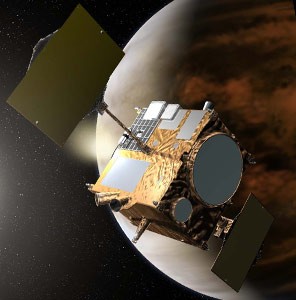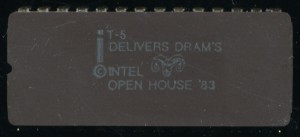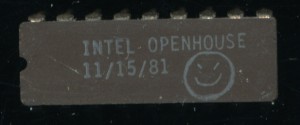Akatsuki: Dawn rises again at Venus

Akatsuki – Though by now its main antenna is probably brown or black from being baked by the sun – Powered by a NEC uPD55117B-018 16-bit processor.
Akatsuki, Japanese for Dawn, was launched in May of 2010 for a journey to the morning star, Venus, on a JAXA H-IIA rocket. The H-IIA flight computer runs on a space rated version of the NEC V70 32-bit processor, running the NEC RX616 RTOS. A processor significantly faster than that of the interplanetary probe it was launching.
“it will have a short cruise to Venus, entering its long, elliptical orbit in December. Its mission should last several years. “
In space, things don’t always go as planned…
On December 7th Akatsuki entered orbit around Venus, December of 2015 rather than 2010. Due to a valve in the fuel pressurization system not opening all the way the orbital insertion engine ran much too lean on its attempt to enter orbit, causing it to overheat and catastrophically fail. This left the probe on a heliocentric orbit, moving away from Venus. The Japanese Space Administration (JAXA) was not deterred, Akatsuki’s orbit would eventually meet up with Venus again, almost exactly 5 years later. JAXA determined they could use the probes attitude control thrusters, which feed off the same fuel tank as the failed main thruster, to insert Akatsuki into a highly elliptical, yet still useful orbit. Had the Attitude control system used a separate fuel system (which is actually the more common design method) this would not have been possible, as it would take a relatively large amount of fuel, fuel that was available on Akatsuki due to the main engine failing and being shut down before its burn was completed. It should be noted that such a maneuver had never previously been even proposed, let alone attempted. There was however another small problem…
Posted in:
CPU of the Day



